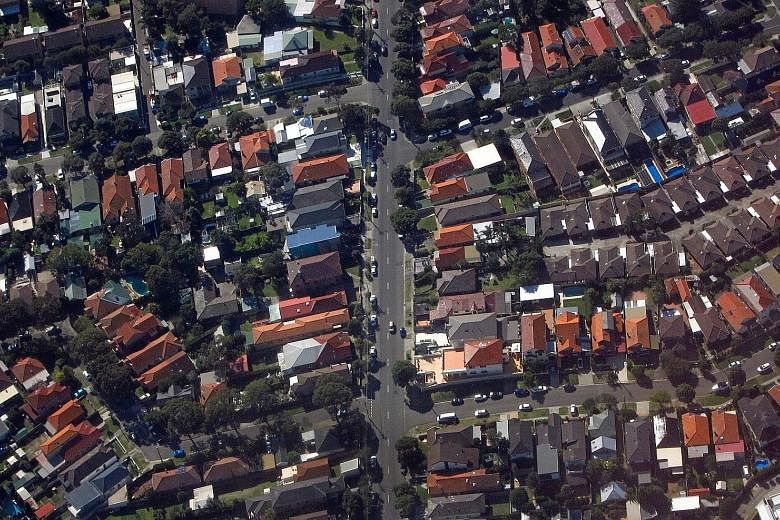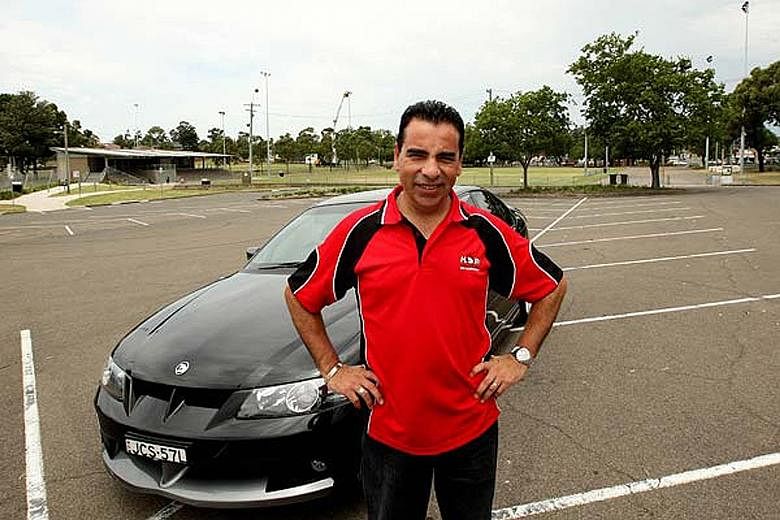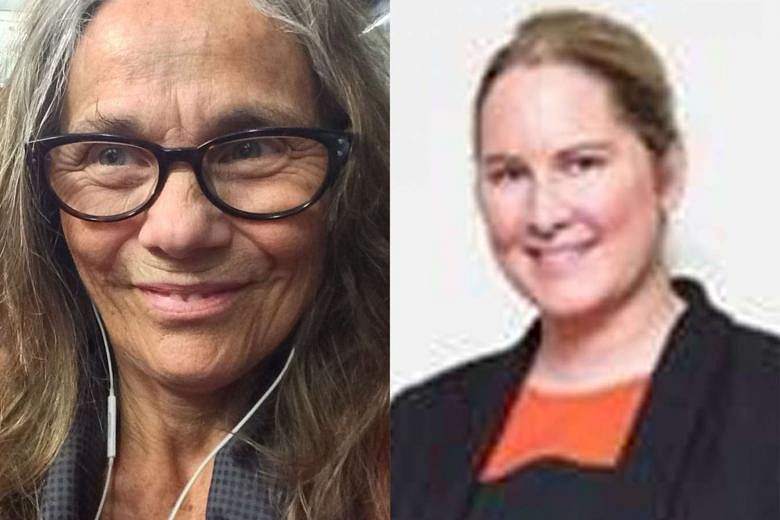SYDNEY • Sitting in her car on a congested motorway on the way to work in western Sydney, Ms Michelle Playford chats by phone with friends who are also stuck in the traffic.
They talk about almost everything, except for one topic. "We don't talk about the traffic," said Ms Playford.
The worsening congestion in Australia's largest city means that it takes Ms Playford, 37, about an hour, sometimes almost two, each way to make the 40km trip from her village home in Warrimoo to her office in Blacktown.
She said she would prefer to take a train - which would be more relaxing - but a scheduling change several years ago forced her to commute by car.
"You turn up to work cranky, especially if the traffic has been a nightmare," she told The Straits Times.
"It can affect your relationships - your time with family and friends. It affects your health, your time for exercise. In winter, you get home and it is dark."

Ms Playford, who lives with her partner and son, said the drive "does get quite boring".
"Once it (the commute) starts creeping up over the hour, it is hard to handle."
-
Turnbull takes a ride on NY subway
-
During a visit to New York for this month's United Nations General Assembly, Australian Prime Minister Malcolm Turnbull did what he always does: He took a ride on the subway.
As other passengers looked on, Mr Turnbull and his wife Lucy - accompanied by security guards - hopped on at Fulton Street station to ride to Battery Park.
"I'm a great fan of subways generally," he told reporters.
The former investment banker and self-made millionaire is also a fanatic devotee of public transport. He is regularly photographed travelling across Australia on buses, trains, light rail and ferries - a practice he has continued since becoming prime minister last year.
As a leader, he has committed to work towards the concept of the "30-minute city", ensuring that all residents can reach their place of work or study within half-an-hour.
This does not mean that all journeys take 30 minutes but that "wherever you live… there should be, within a reasonable commute, a wide range of jobs, a wide range of educational opportunities and recreational opportunities".
Admitting that his ruling coalition has tended to favour funding roads, he has insisted he will commit to whatever "makes sense", whether this includes rail or other forms of public transport.
To drive this plan, Mr Turnbull last year created Australia's first ministerial portfolio dedicated exclusively to "cities".
The Assistant Minister for Cities, Mr Angus Taylor, said the 30-minute city was a "realistic prospect, but only with well-placed job centres".
"We see, each day, about 400,000 people moving out of western Sydney to get to work and we want to dramatically reduce this number," he said in a speech in Sydney last month.
"We see Sydney as three cities, not one. The central business district, Parramatta and the outer west… and all of these cities need fast-growing job centres."
Jonathan Pearlman
Ms Playford's daily struggle is becoming common in Sydney, a fast-growing city which has tended to grow out instead of up. Its burgeoning problems in urban sprawl and transportation are similar to those of other major cities and could be a case study for up-and-coming ones.
Since 2003, Sydney's population has jumped by almost 20 per cent to five million. The growth has been highest in western Sydney, which is home to more than 2.2 million people, a figure expected to reach three million by 2030.
Much of this is due to geography: the city's expansion is constrained by the coastline, which has tended to push new developments westwards.
In contrast, the city centre and surrounding areas have high densities, with people wanting to live close to the jobs and amenities in the city centre. Several inner-city areas have densities of more than 13,000 residents per sq km.
Planning experts have called for Sydney to shift away from expanding across low-density outer suburbs to higher-density apartment living. But this would involve weaning Australians off their obsession with living in houses.
"Density is the only way to go in terms of the growth of Sydney, especially since we're looking at a doubling of the population by 2050," Professor Sue Holliday, a planning expert at the University of New South Wales, told Fairfax Media earlier this month.
"Sprawl has always been bad. Pushing people to the edges of Sydney where some end up spending 30 per cent of their income to drive to work isn't sustainable."
But for some Sydneysiders, increasingly long and expensive commutes have become a reality.
According to a survey in 2014, 23 per cent of Sydney residents took more than 45 minutes to reach their workplace. The average commute was 35 minutes, the longest in Australia and slightly longer than in New York, which has the longest commutes in the United States.
By comparison, the average commute in 2003 took only 32 minutes.
A study by the Australian Automobile Association last month found that the average family of four in Sydney spends A$419 (S$567) a week - or 17 per cent of their total income - on transport, about 30 per cent higher than the national average.
The costs include petrol, tolls, public transport and the expense of running and paying off a car.
Besides urban sprawl, road infrastructure has been blamed for worsening car traffic. The city lacks feeder roads to major motorways as well as roadways that would allow motorists to bypass the city centre.
In addition, poor rail access and problems with unreliable or full trains and buses have led many to opt to drive.
A resident of western Sydney, Mr Joe Garzaniti, a 55-year-old hairdresser and father of two, drives about 20km to his work each day, which is also in the west.
He said the drive takes up to an hour - longer if there is an accident or road works - but the congestion has worsened in recent years.
"People are moving out west more but our road system is rubbish," he told The Straits Times.
"After eight to 10 hours a day at work, the last thing you want to do is spend an hour and a half in traffic. You want to get home."

Experts have called for a range of options to improve Sydney's commuting woes, including encouraging workplaces to have staggered starting times for staff and promoting higher-density living.
The New South Wales state government is building large-scale rail and light rail projects which will begin to operate from 2019. In addition, a A$16.8 billion project to build, expand and connect roads across the city is under way.
But experts say the infrastructure has come too late, with road space and transport capacity failing to keep up with the city's expansion.

The main transport issues in Sydney revolve around the city's fast-growing west. The Western Sydney Regional Organisation of Councils, which represents local councils across western Sydney, has been calling for companies and government agencies to locate their offices in business districts in the west rather than in the central business district.
The organisation's chief executive, Mr Charles Casuscelli, said the new transport projects will make a dramatic difference but will still only help to "catch up" to the region's recent growth.
He said Sydney should aim to not have any detached housing within 1km of all train stations.
"We need higher densities along the transport corridors," he told The Straits Times.
"There is far too much detached dwelling to sustain a modern transport network."
As population pressures create traffic congestion, long commutes are the daily bane of not only those who drive.
On Sydney's far north coast, Ms Mandy Mullen, 64, catches a bus that takes 90 minutes to reach the central business district.
She then walks for 15 minutes beore arriving at her job at the National Film and Sound Archive.
"It is a huge chunk of your day - you just have to accept it," the mother of three told The Straits Times. "I am not sure a local job would be as fulfilling."
Another reason she puts up with the commute is that it allows her to live in her quiet beachside suburb, she said.
"I have often thought about moving," said Ms Mullen. But she added: "Where I live is as close as you can get to wilderness. That is the payoff."




